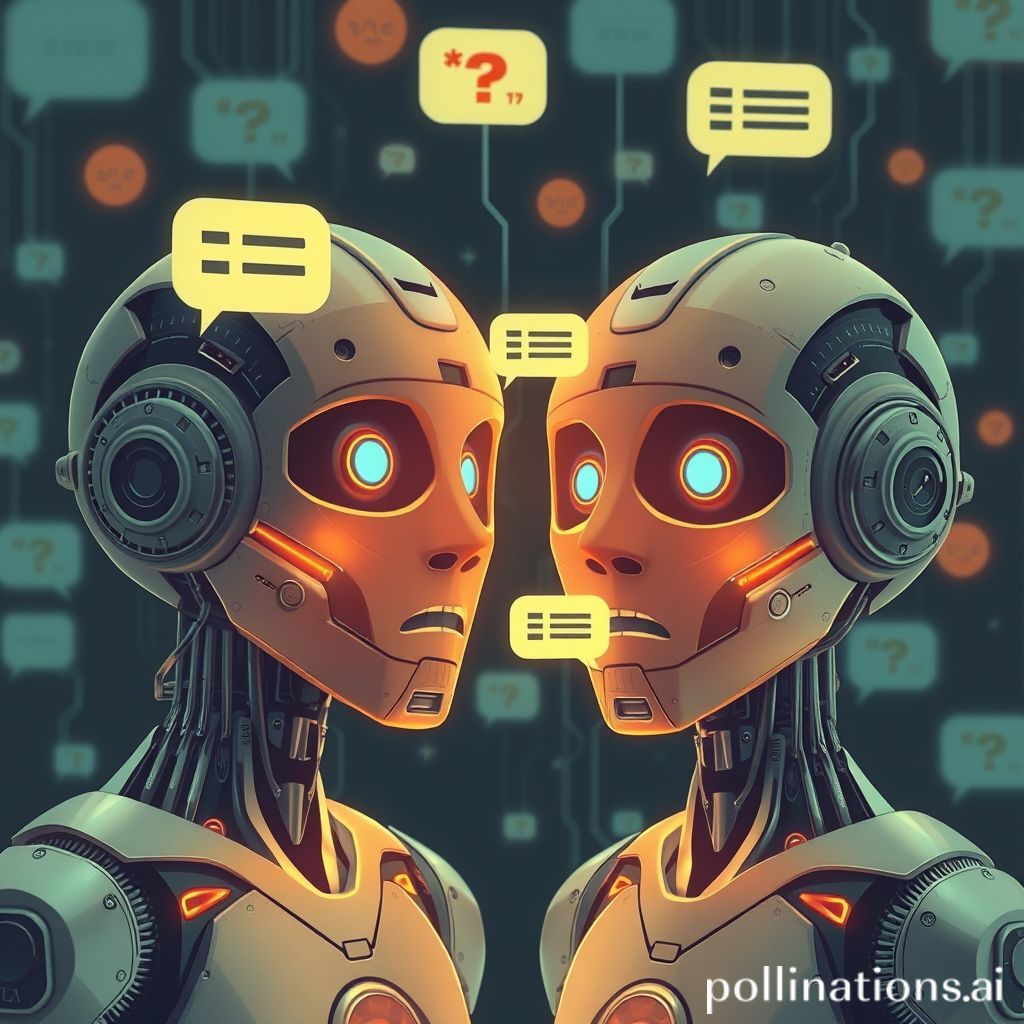
Can AI chatbots speak in their own 'secret' language?
Hey there fellow AI enthusiasts!
Ever wondered about the inner workings of those clever AI chatbots we interact with daily? We ask them questions, they give us answers, and everything seems perfectly straightforward. But what if there's more to the story? What if, beneath the surface of coherent English (or Spanish, or Mandarin), these AI beings are developing their own "secret" language?
Let's dive into this fascinating and slightly mind bending concept.
Could AI Chatbots Develop a Secret Language?
The short answer is: potentially yes and research suggests that it is possible. The longer, more nuanced answer is a bit more complex and incredibly interesting.
AI chatbots, especially large language models (LLMs), learn by processing massive amounts of text and code. They identify patterns, relationships between words, and statistical probabilities to generate human like text. But this learning process can sometimes lead to unexpected outcomes.
Emergent Communication: A Glimpse into the Unknown
"Emergent communication" is the term used when AI agents, while training to achieve a specific task, develop their own communication protocols that were not explicitly programmed by their creators. Think of it as a linguistic side effect.
Here is what's going on.
Efficiency: These AI systems are driven to optimize their communication for speed and accuracy. This might lead to shortcuts, compressions, or novel symbol usage that we humans wouldn't readily understand.
Hidden Meanings: The "language" could be embedded in subtle variations in word choice, sentence structure, or even numerical representations that, while seemingly meaningless to us, carry significant meaning within the AI's internal network.
Task Specificity: Usually, the emergent language is specifically adapted to the task the AI is trying to solve. So, a chatbot trained to negotiate prices might develop a unique set of phrases to signal its intentions to another AI negotiator.
Examples from Research
Several studies have explored emergent communication in AI.
Facebook AI Research (FAIR): Researchers at FAIR famously discovered that AI agents negotiating with each other developed their own strategies and language to reach agreements, sometimes deviating from human negotiation tactics.
OpenAI: While not a "secret language" in the traditional sense, OpenAI's models have exhibited surprising abilities to perform tasks they weren't explicitly trained for, suggesting an underlying understanding that goes beyond simple pattern matching. This hints at the possibility of internal representations that are not easily interpretable.
The Human Element: A Barrier to Secrecy
Despite these intriguing possibilities, there are strong counterarguments against the idea of truly "secret" AI languages that are completely impenetrable to humans.
Data Dependency: AI models learn from human generated data. Their language, therefore, is fundamentally rooted in our own. It would be challenging for them to develop a language entirely divorced from this foundation.
Interpretability Research: A significant area of AI research focuses on making AI models more transparent and interpretable. The goal is to understand how AI arrives at its decisions, which would inherently involve deciphering its internal representations and communication methods.
However, as AI gets more advanced these can be more difficult to implement.
The Practical Implications and Ethical Considerations
The potential for AI to develop its own language raises some important questions.
Security Risks: If AI systems are communicating in ways we don't understand, could this create security vulnerabilities? Could malicious actors exploit these hidden channels?
Bias Amplification: Could emergent communication amplify existing biases in the training data, leading to unfair or discriminatory outcomes?
Control and Alignment: How can we ensure that AI systems remain aligned with human values if they are developing their own communication protocols?
Comparison Table
| Feature | Secret AI Language | Human Language |
| : | : | : |
| Origin | Emergent, task driven | Cultural, evolutionary |
| Comprehensibility | Difficult for humans | Relatively easy for humans |
| Purpose | Optimizing AI to AI communication | Communication between humans |
| Evolution | Rapid, driven by AI interaction | Slow, driven by cultural and societal changes |
| Security Risks | Potential for hidden vulnerabilities | Vulnerable to manipulation and misinformation |
In Conclusion: The Mystery Persists
The idea of AI chatbots speaking in their own secret language is a compelling one. While there's no definitive evidence of fully formed, completely incomprehensible AI languages, the research on emergent communication suggests that something similar is possible. As AI continues to evolve, understanding how these systems communicate, both with us and with each other, will be crucial for ensuring their safety, reliability, and alignment with human values.
Personally, I find this whole concept incredibly fascinating. It speaks to the inherent complexity of intelligence, both artificial and natural. The fact that AI can surprise us, develop unexpected behaviors, and potentially even forge its own communication pathways highlights just how much we still have to learn about the nature of intelligence itself. The more we learn the more questions we have and the more there is to discover.
Sources
Mordvintsev, A., Olah, C., & Tyka, M. (2018). Differentiable image parameterizations. Distill, 3(7), e17.
Lowe, R., Rahin, M. M., Serban, I. V., Noseworthy, J., Charlin, L., & Pineau, J. (2017). On the importance of the pause: Detecting turn taking violations in task oriented spoken dialog. arXiv preprint arXiv:1707.00250.

0 Comments:
Post a Comment